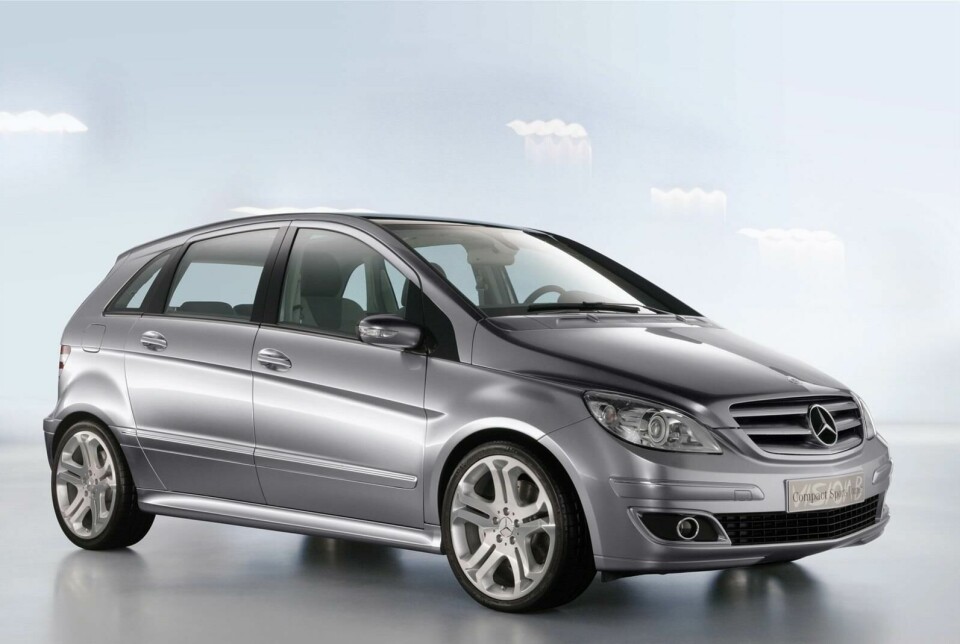
Design Review: Mercedes-Benz CST Vision B
Dec 13, 2004 – Nearly three years ago Mercedes presented the Vision R Grand Sports Tourer concept in Detroit which heralded a new direction for Mercedes production cars. The GST was a ‘crossover’ vehicle with the four wheel drive and muscular design identity of an SUV, the three rows of seats and versatility of an MPV, and the athletically premium qualities typical of a sports sedan.






Dec 13, 2004 – Nearly three years ago Mercedes presented the Vision R Grand Sports Tourer concept in Detroit which heralded a new direction for Mercedes production cars. The GST was a ‘crossover’ vehicle with the four wheel drive and muscular design identity of an SUV, the three rows of seats and versatility of an MPV, and the athletically premium qualities typical of a sports sedan.
The Compact Sports Tourer that debuted at the Paris Motor Show is a smaller version of the same type of crossover vehicle. It does without the four wheel drive and third row of seats, but retains the same tough SUV and practical MPV qualities, and the sports sedan premium, dynamic feel.
Starting at the front of the car is a subtle development of the more sporting Mercedes grille, similar to the CLS. Separated by an unusual narrow channel from the grille are headlamps running seamlessly into the front wing, which is distinctly separate and a lot lower than the hood surface. This upper surface to the wing grows into a prominent shoulder which is one of the car’s strongest motifs as it plunges forwards from the base of the C-pillar and tail light, visually held in place by an increasingly deep undercut.
This confident feature also works well with the quite voluminous wheel arches (not dissimilar to the BMW X5) and the tapering DLO, to give the car an unusually emotive and muscular character.
The interior is less dramatic but underpins the premium, if not the sporting, feel of the car by continuing to using themes established in the GST; the centre console set into a horizontal IP beam, twin instrument dials (like a BMW), and steering wheel with horizontal rib. But the generic Mercedes architecture, formal surfaces, large four spoke wheel, and square air vents are a long way from the signifiers evident in most cars with ‘sporting’ aspirations and not as progressive as this car’s European customers might expect - perhaps the fact that it has been conceived also for America explains this direction.
Despite being derived in concept from the larger Grand Sports Tourer, and being based on a lengthened A-class platform, the CST is a concept car preview of a production car whose package and overall dimensions (Length: 4270, Height: 1570mm, Width: 1778 mm) are those of a slightly sporting European mini MPV such as a Ford C-max or Seat Altea. But unlike these existing (and exclusively mainstream branded) mini-MPVs, the CST doesn’t have an exterior or interior design identity that shouts ‘family’; it has a more premium and dynamic design identity.
Designers Mark Fetherston and Gorden Wagener (Chief Designer) developed the CST under the lead of Senior Vice-President of Design Peter Pfeiffer. And this subtle but significant difference will be the crux of what defines the ‘Sports Tourer’ vehicle type within Mercedes and that contributes to the CST’s appeal and commercial success. Expect the production B-class to define a new Premium Mini MPV sector and become one of Mercedes Benz’s most successful new wave high volume cars.
Related Stories:
Mercedes CST Vision B debut at the Paris Motor Show
Mercedes GST Vision R debut at the Paris Motor Show








Designers Mark Fetherston and Gorden Wagener (Chief Designer) developed the CST under the lead of Senior Vice-President of Design Peter Pfeiffer.



